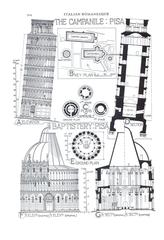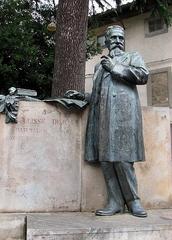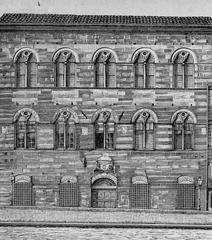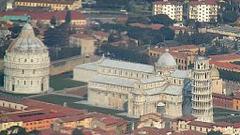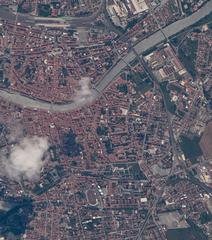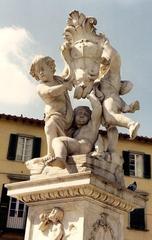
Visiting Knights’ Square in Pisa: Hours, Tickets, History, and More
Date: 16/08/2024
Introduction
Knights’ Square, or Piazza dei Cavalieri, in Pisa, Italy, stands as one of the most historically and architecturally significant sites in the city. This guide delves into the rich history, architectural marvels, and essential visitor information about Knights’ Square, making it an indispensable resource for anyone planning to visit. The square’s origins trace back to the medieval period when it served as a central gathering place for knights and dignitaries. Its transformation under the reign of Grand Duke Cosimo I de’ Medici in the 16th century marked a significant turn in its history, with the establishment of the Knights of St. Stephen and the construction of grand buildings that reflect the architectural and political ambitions of the Medici family (Forza Pisa; ItalyGuides). Today, Knights’ Square is not just a historical site but also a vibrant cultural hub that hosts various events and exhibitions, attracting visitors from around the world (Forza Pisa). Whether you are a history enthusiast or a curious traveler, Knights’ Square offers a compelling glimpse into Pisa’s vibrant past.
Table of Contents
- Introduction
- Historical Background
- Political and Cultural Hub
- Modern-Day Significance
- Preservation Efforts
- Key Architectural Highlights
- Visitor Information
- FAQ
- Conclusion
- Call to Action
Historical Background
Origins and Early History
Knights’ Square has a rich history that dates back to the medieval period. Initially, it served as a central gathering place for knights and dignitaries. The square’s origins are closely tied to the establishment of the Knights of St. Stephen, a prestigious order founded by Grand Duke Cosimo I de’ Medici in the 16th century. This order was created to defend the Mediterranean from Ottoman pirates and to promote the Catholic faith (Forza Pisa).
Transformation Under Cosimo I de’ Medici
Under the reign of Cosimo I de’ Medici, Knights’ Square underwent significant transformation. The area was redesigned to become the headquarters of the Order of the Knights of Santo Stefano. This transformation included the construction of several grand buildings that still stand today, reflecting the architectural and political ambitions of the Medici family (ItalyGuides).
Architectural Significance
The architectural marvels within Knights’ Square are a testament to the grandeur and historical significance of this site. Notable buildings include the Palazzo della Carovana, which served as the headquarters of the Knights of St. Stephen and now houses the Scuola Normale Superiore di Pisa (Holidify). Another significant building is the Palazzo dell’Orologio, which has a more gruesome history. Once a hospice and then a prison, it is where Count Ugolino, who featured in Dante’s Divine Comedy, and his unfortunate family were imprisoned and died (ItalyGuides).
Political and Cultural Hub
During the medieval period, Knights’ Square played a crucial role in shaping the political landscape of Pisa. It was here that important decisions were made, alliances were formed, and celebrations took place. The architecture surrounding the square, with its grand palaces and imposing statues, served as a symbol of power and unity among the knights (Forza Pisa).
Modern-Day Significance
Today, Knights’ Square stands as a testament to Pisa’s rich history and the enduring legacy of the Knights of St. Stephen. It continues to attract visitors from around the world who seek to immerse themselves in the vibrant past of this iconic location. The square remains a vital center for cultural engagement, hosting a myriad of cultural events, including art exhibitions, musical performances, and literary gatherings (Forza Pisa).
Preservation Efforts
Amidst the ongoing urban development in Pisa, significant attention is being directed towards preserving the historical integrity of Knights’ Square. Various initiatives are being implemented to safeguard the square’s architectural heritage and promote its historical value. These preservation efforts serve as a testament to the community’s dedication to conserving Knights’ Square and ensuring its legacy endures through time (Forza Pisa).
Key Architectural Highlights
Palazzo della Carovana
The Palazzo della Carovana, designed by Giorgio Vasari, is one of the most prominent buildings in Knights’ Square. Its facade was originally covered in graffiti celebrating the exploits of the ruling Medici family. Today, it serves as the main building of the Scuola Normale Superiore di Pisa, one of Italy’s most prestigious universities (ItalyGuides).
Palazzo dell’Orologio
The Palazzo dell’Orologio, or Clock Palace, is another significant structure in the square. It was built by incorporating two medieval towers and features a clock that was added in the 17th century. The building’s history is marked by its use as a prison, where Count Ugolino and his family met their tragic end (ItalyGuides).
Church of Santo Stefano dei Cavalieri
The Church of Santo Stefano dei Cavalieri, designed by Vasari, was built to serve the religious needs of the Knights of St. Stephen. The church’s interior is adorned with naval trophies and relics from battles fought by the knights, reflecting their military and religious missions (North Abroad).
Visitor Information
Tickets and Visiting Hours
Knights’ Square is open to the public year-round, and there is no entry fee to explore the square itself. However, some buildings within the square, such as the Palazzo della Carovana and the Church of Santo Stefano dei Cavalieri, may have specific visiting hours and ticket requirements. It is advisable to check the official websites or local information centers for the most up-to-date details.
Travel Tips
- Best Time to Visit: Spring and autumn are ideal for visiting Knights’ Square, as the weather is pleasant and the tourist crowds are smaller.
- Getting There: The square is easily accessible by foot from Pisa’s city center. Public transportation options, including buses and taxis, are also available.
- Nearby Attractions: While in Pisa, visitors should not miss the Leaning Tower of Pisa, the Pisa Cathedral, and the Camposanto Monumentale, all within walking distance from Knights’ Square.
- Accessibility: The square is accessible to visitors with mobility issues. However, some of the historical buildings may have limited accessibility.
FAQ
Q: What are the visiting hours of Knights’ Square? A: Knights’ Square is open 24/7 to the public, though individual buildings may have specific visiting hours.
Q: How much does it cost to visit Knights’ Square? A: There is no entry fee to explore Knights’ Square itself. However, some buildings may require tickets.
Q: Are there guided tours available? A: Yes, guided tours are available and can be booked through various tour operators or at local information centers.
Conclusion
Knights’ Square in Pisa is a site of immense historical, architectural, and cultural significance. From its origins as a medieval gathering place to its transformation under Cosimo I de’ Medici, the square has played a pivotal role in shaping the political and cultural landscape of Pisa. Today, it stands as a testament to the city’s rich history and continues to be a vibrant center for cultural engagement and academic excellence. Preservation efforts ensure that this iconic location will remain a cherished part of Pisa’s heritage for future generations to explore and appreciate.
Call to Action
For more travel guides and updates, download the Audiala app, check out our other related posts, and follow us on social media.
References
- Forza Pisa, 2024, https://forzapisa.it/2024/02/24/historical-significance-of-knights-square-pisa-5/
- ItalyGuides, 2024, https://www.italyguides.it/en/tuscany/pisa/piazza-dei-cavalieri
- Holidify, 2024, https://www.holidify.com/places/pisa/knights-square-sightseeing-1270212.html
- North Abroad, 2024, https://northabroad.com/pisa-tuscany-travel-guide/
- iHeartItaly, 2024, https://iheartitaly.co/best-things-to-do-in-pisa-italy/
- Savoring Italy, 2024, https://www.savoringitaly.com/pisa-italy/
- Forever Vacation, 2024, https://forevervacation.com/tuscany/knights-square-pisa



